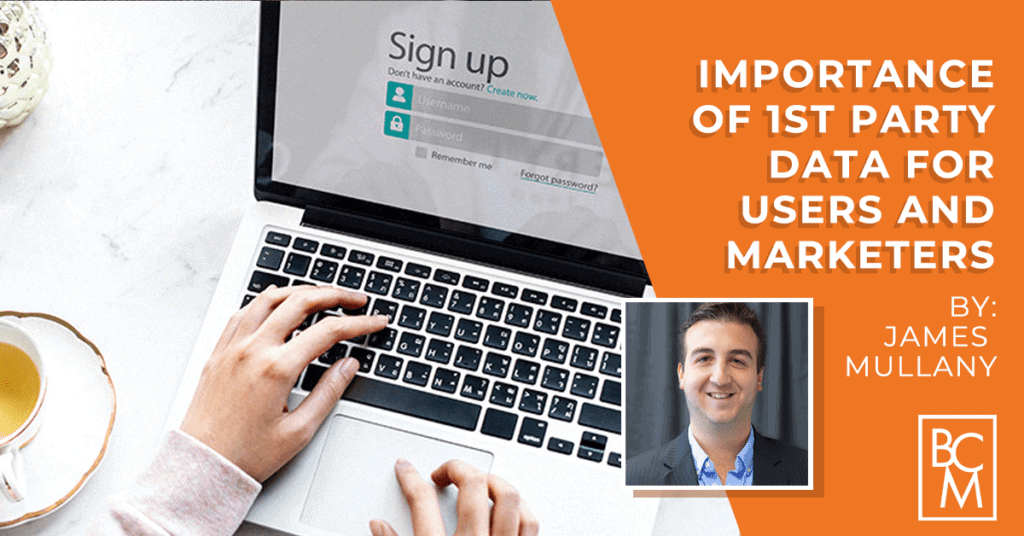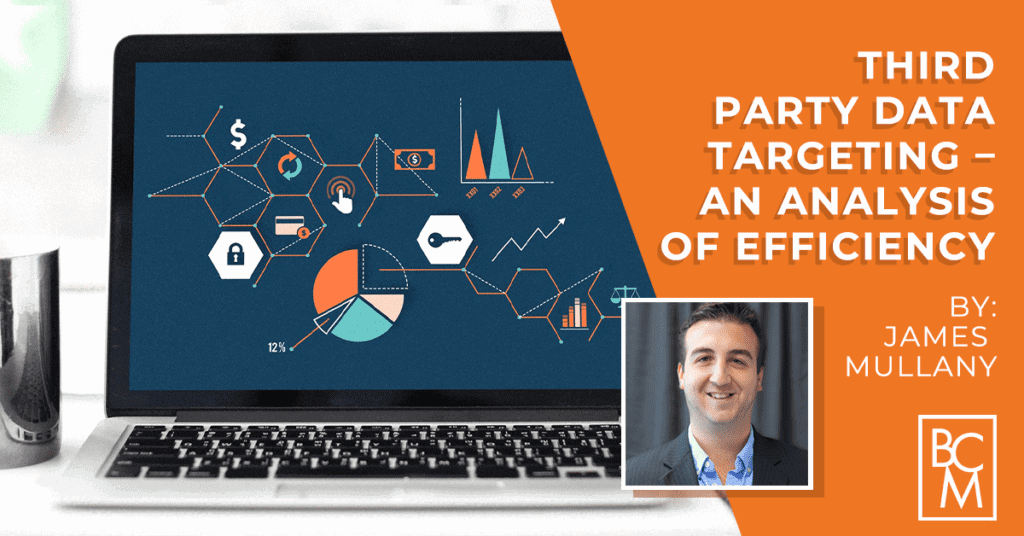
By James Mullany
Digital marketers and publisher sales teams love acronyms, buzz words and even completely fabricated terms that are not well-known across the industry. It can often seem that they’re following a strategy of ‘If you can’t convince them, then confuse them.’ One area of confusion is data. Big data, data scientists, DMP, CDP, ITP, GDPR, data lake, data warehouse; the terms are endless. Fortunately, there is widespread agreement on the three main data categories of 1st, 2nd and 3rd party data. Having a clear understanding of these data types is a necessary starting point on your path to avoiding terminology confusion.
What is 1st party data?
Simply, 1st party data is data that you have directly collected yourself. This includes cookies, email, phone number, device ID or a loyalty # collected from your website, in-store, mobile app and social brand page. This data is the most powerful as it’s a direct signal from your audience. Below is an example of how brands are collecting data that would be categorized as 1st party:
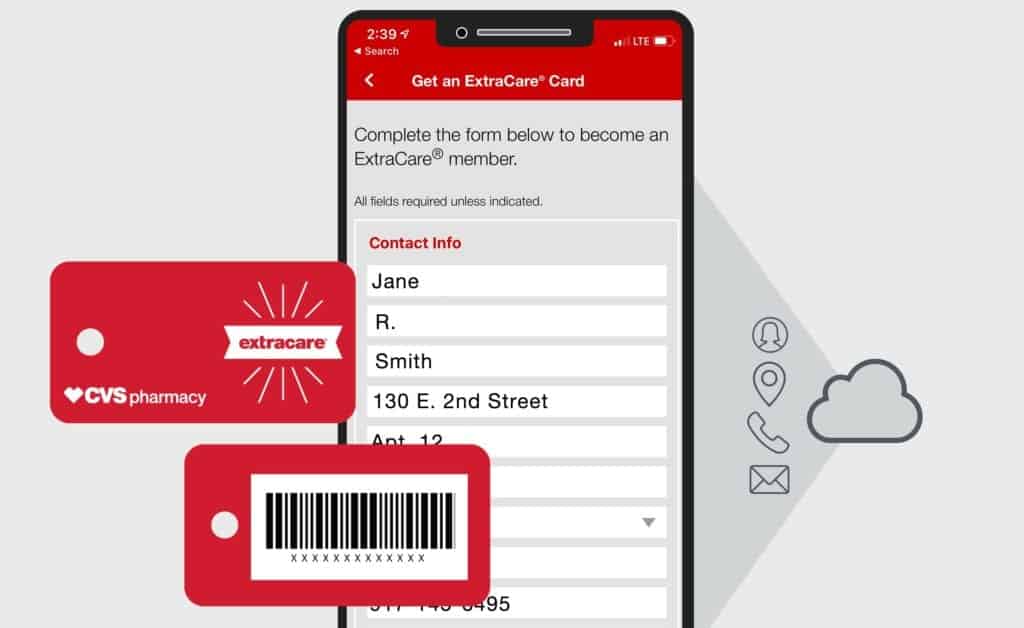
In-Store: When a customer enrolls in a loyalty program at CVS, an email or phone number is submitted, and a customer ID is created. Every time the loyalty card is scanned, or a phone number is entered at check-out, CVS collects and stores this data. CVS owns this data, classified as 1st party, and can use it to inform messaging, offers and business analytics.
What is 2nd party data?
2nd party data is the 1st party data collected and owned by a specific entity or direct partner. Just like in the 1st party data example, the owner collects the data from the same sources. Instead of limiting the usage to themselves, they are monetizing the data by selling directly to an outside partner. Access to this data requires coordination with that partner brand or website. As an example, let’s use the fictional scenario below to demonstrate the process:
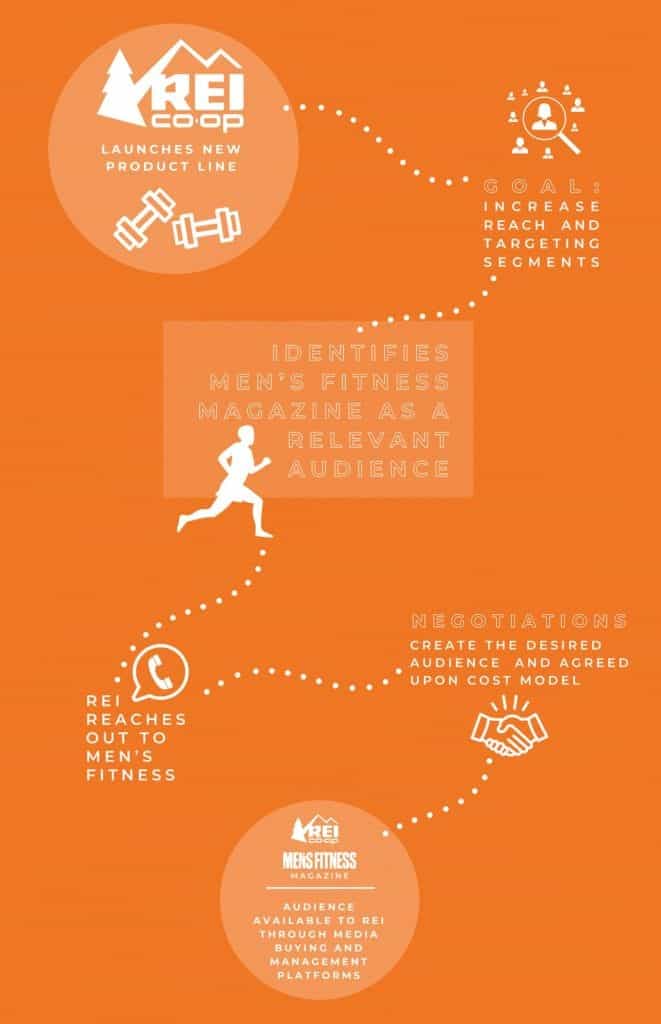
1. REI, known most widely for outdoor adventure equipment and apparel, is releasing a new line of free weights and exercise equipment. To market this product release, they will be using all owned channels and data points collected from website and in-store activities.
2. REI would like to increase their reach and targeting segments and identifies Men’s Fitness Magazine as a relevant source of audience data for their program. REI’s marketing team would then reach out and express this interest to Men’s Fitness magazine.
3. Men’s Fitness magazine’s data marketing team would negotiate with REI to create the desired audience (such as list of ID’s, cookies or emails) and agreed upon cost model (CPM or fixed rate) and then make this audience available to REI through media buying and management platforms such as Lotame, Adobe, SalesForce, etc.
What is 3rd party data?
A 3rd party data set can be a mixed bag. 1st and 2nd party data has a sole owner that collected the data. 3rd party data sets can be collected by many sources and then aggregated and sold programmatically. For example, if you conduct a flight search on an Online Travel Agency (OTA) or travel aggregator site like Booking.com or Kayak.com, there may be anywhere from 10 to 30 different companies tracking your search behavior. These companies, such as ComScore, Nielsen, and others (check out the Oracle data directory for more) then aggregate the data into customer profiles such as In-Market for travel, International Traveler, Business traveler, etc. and then resell the data to brands for ad targeting.
The 3rd party data segments can be as wide as demo or HHI to as narrow as “have purchased a bicycle in the last month”. But marketers beware, accuracy is not guaranteed. If you are targeting pregnant women in the US and are pitched a 3rd party audience segment that has an audience size of 30MM, you know this list is inaccurate. There are only 4 million babies born a year in the US, so a list size significantly above 4MM will have some inaccuracy. Be sure to understand data sources, collection methodology and recency.
Where should do I start my marketing data collection efforts?
I recommend that you start with 1st party data (learn more here) and then expand from there. The quality of 1st party data is typically highest with 3rd party data being the lowest quality. However, if you’re caught in a jam and can’t activate any 1st party data, both the 2nd and 3rd party data options are viable sources to improve marketing effectiveness. Here’s a quick recap, in broad terms, to have in your back pocket:
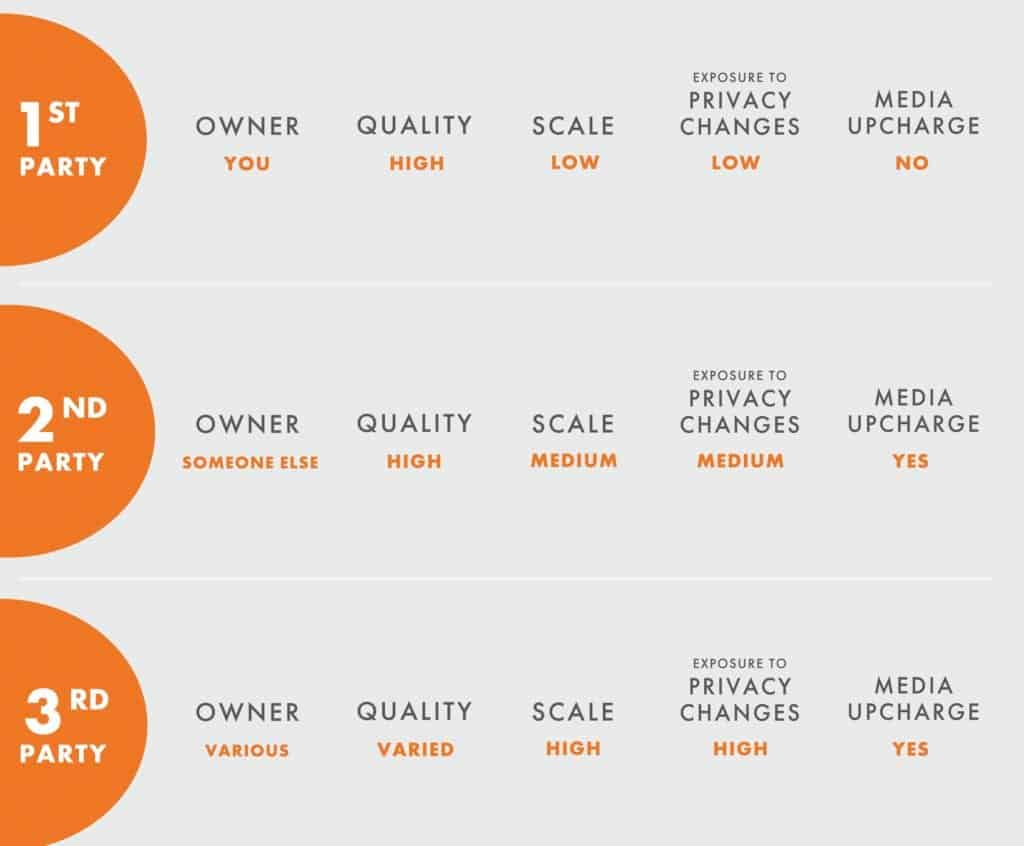
Please be sure to contact us with any other questions you may have about 1st, 2nd, & 3rd party data. Our team ready to assist you with all your data needs.

